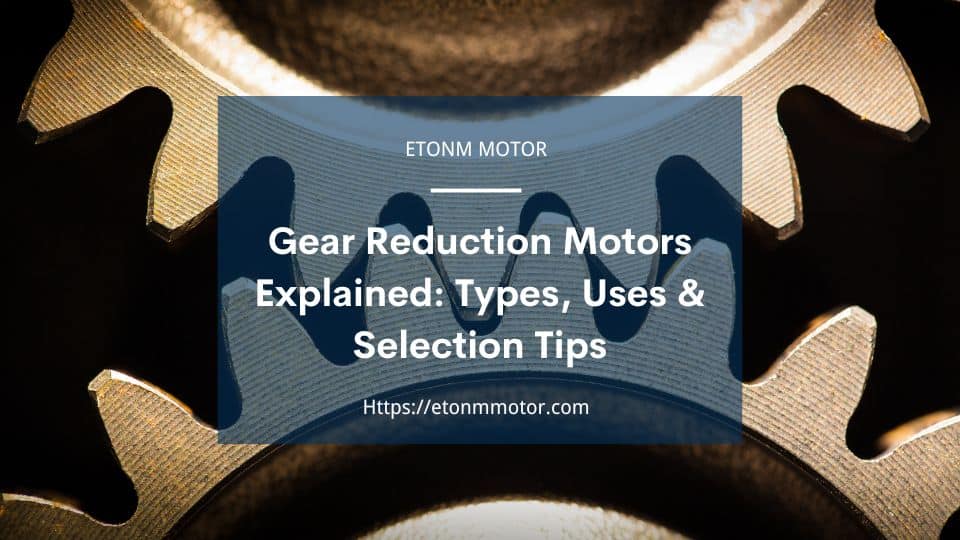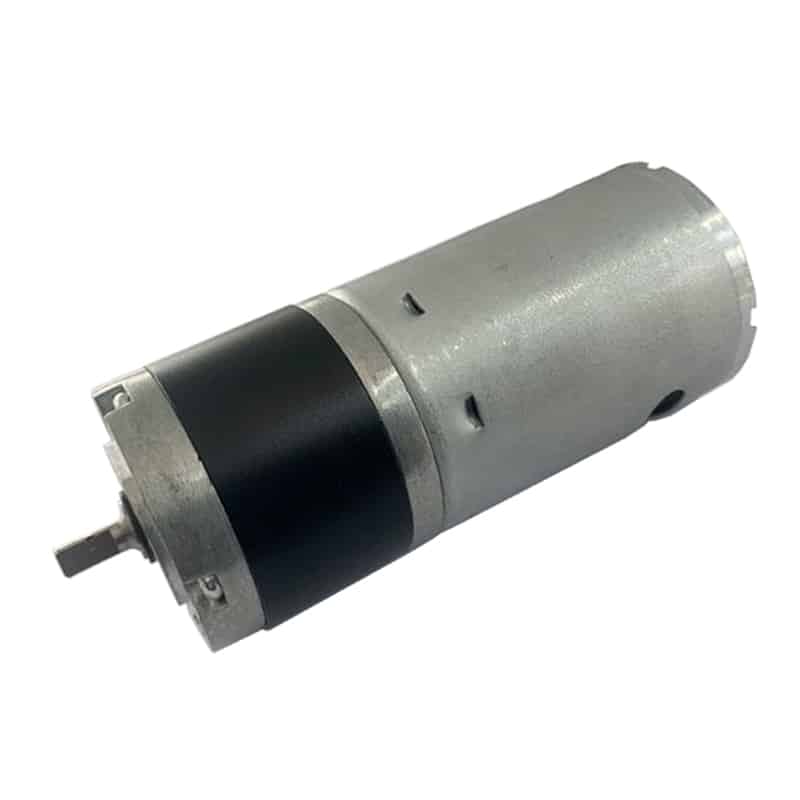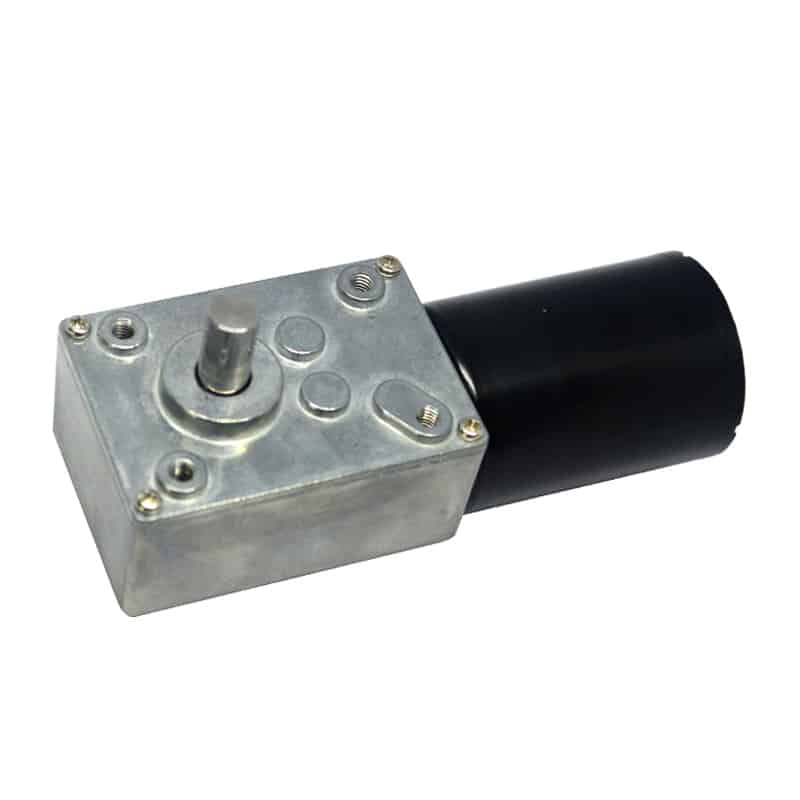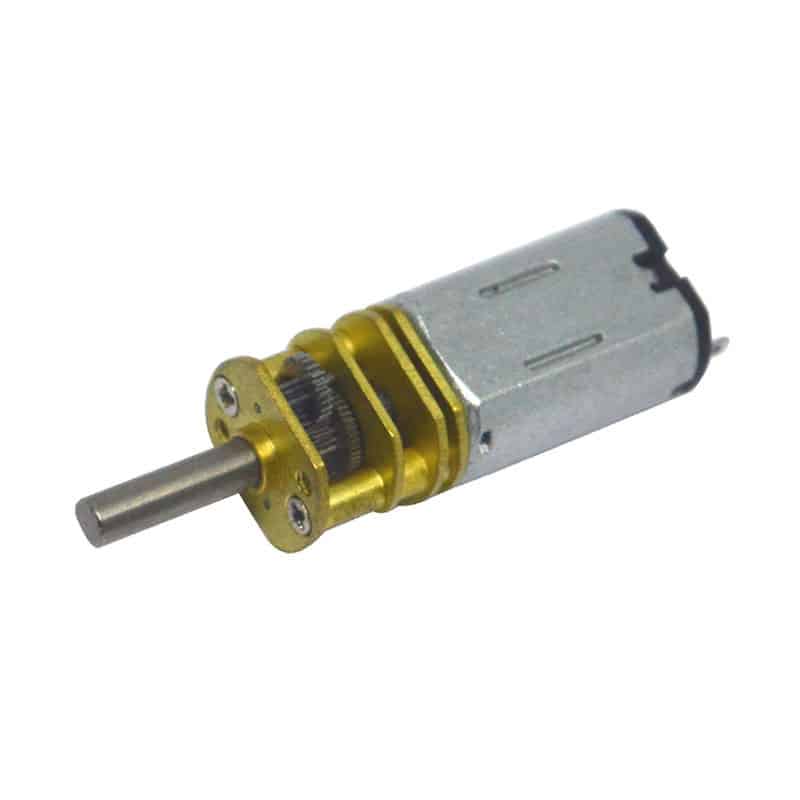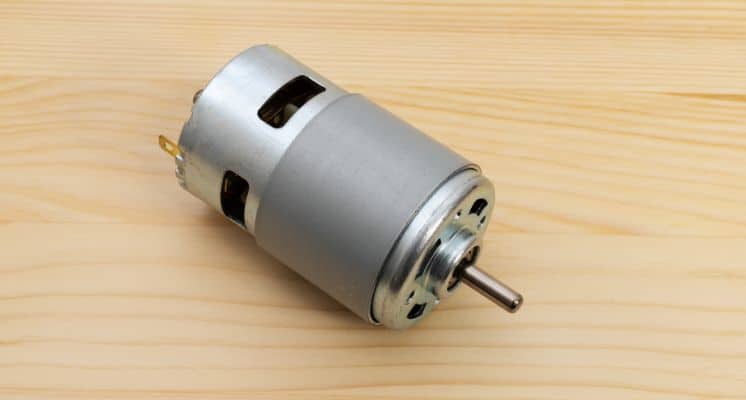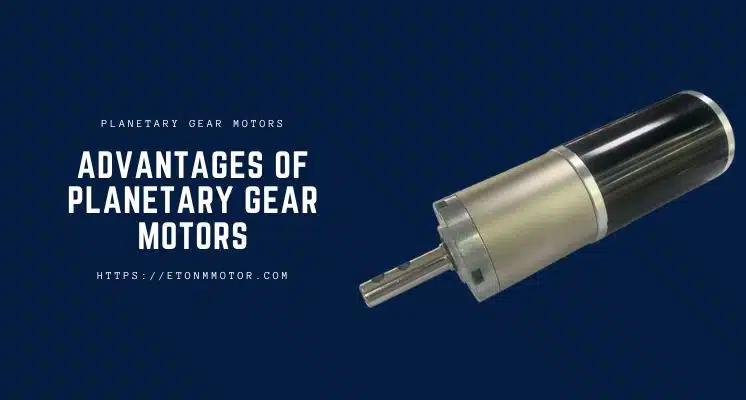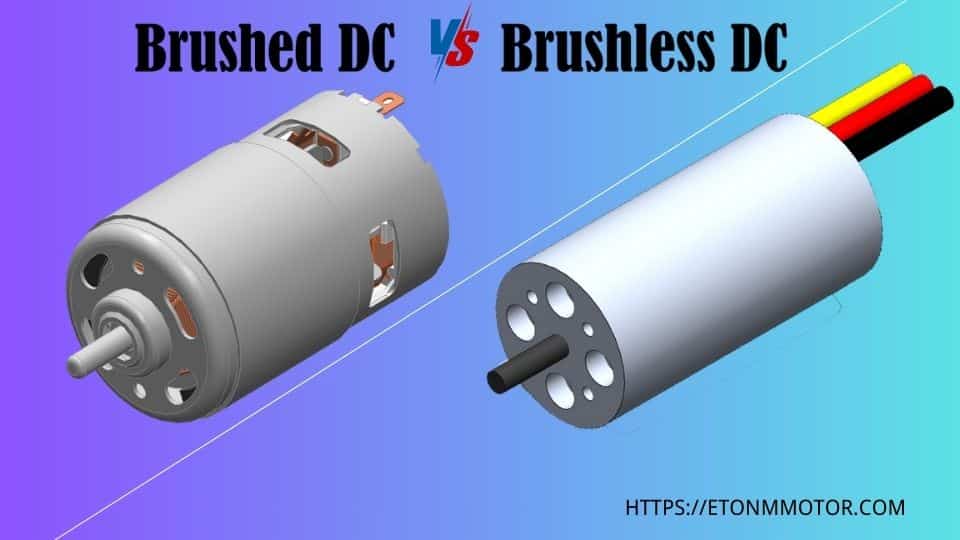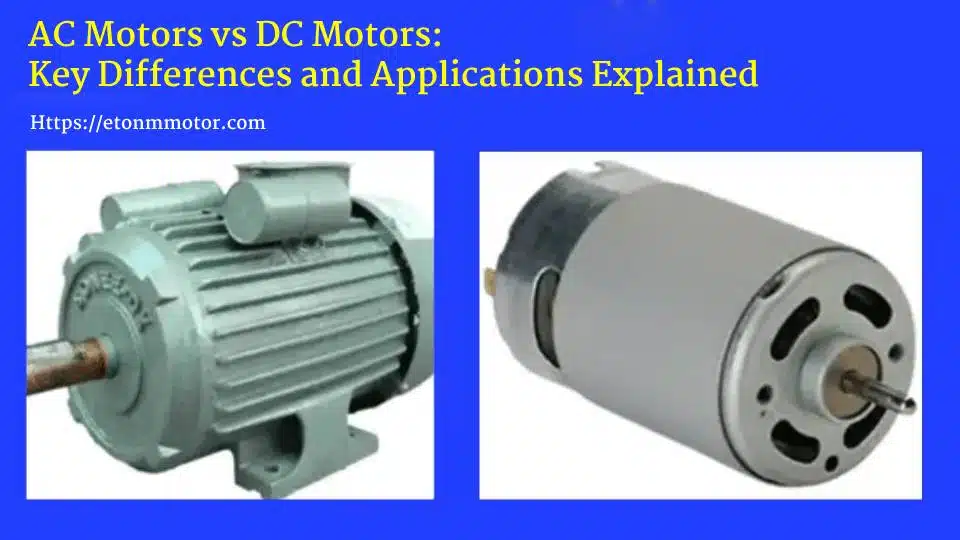"Curious about gear reduction motors? Explore their types, real-world applications, and expert tips to choose the right one for your project with Etonm Motor."
Table of Contents
Why Gear Reduction Motors Matter
Ever wondered how your smart home gadgets hum along so smoothly or how industrial robots lift heavy loads with precision? The secret lies in a little engineering marvel called the gear reduction motor. At its core, this nifty device uses a system of gears to slow down a motor’s speed while boosting its torque—think of it like shifting gears on a bicycle to climb a steep hill. It’s all about converting raw power into something more usable, and that’s why these motors are a big deal across industries.
Gear reduction motors aren’t just another piece of machinery; they’re the unsung heroes powering everything from your robotic vacuum cleaner to the conveyor belts in a factory. Whether you’re designing a vending machine that dispenses snacks flawlessly or a medical device that needs pinpoint accuracy, understanding these motors can make or break your project. And here’s the kicker: choosing the right one isn’t as daunting as it sounds—stick with us, and we’ll walk you through the essentials.
In this guide, we’ll break down the types of gear reduction motors, explore where they shine in the real world, and share some practical tips to pick the perfect one for your needs. Curious about how torque conversion works or why these motors matter so much? Let’s dive in and find out!
How Gear Reduction Motors Work
So, how does a gear reduction motor actually do its magic? It’s simpler than you might think, but it’s also a brilliant piece of engineering. At its heart, this motor takes the high-speed, low-power output from an electric motor and transforms it into something slower, stronger, and way more practical. The key player here? Gears. These little toothed wonders mesh together to slow things down while cranking up the torque—essentially giving your motor some serious muscle.
Picture this: you’re pedaling a bike up a hill. If you’re in a high gear, your legs spin like crazy but you barely move. Switch to a lower gear, and suddenly each pedal push gets you further—same effort, more oomph. That’s torque conversion in action, and it’s exactly what happens inside a gear reduction motor. The motor spins fast, the gears step in to slow it down, and the output shaft delivers that slow, powerful turn you need to get the job done.
The setup usually involves a few key components. First, there’s the motor itself—typically a DC or AC type—spinning away like a caffeinated hamster on a wheel. Then comes the gearbox, packed with gears like planetary or worm types (more on those later), which do the heavy lifting of speed reduction. Finally, the output shaft takes that adjusted power and sends it out into the world—whether it’s turning a conveyor belt or opening a smart curtain. It’s a smooth handoff, and when it works right, you barely notice it’s there.
Want to geek out a bit? The gear ratio decides how much the speed drops and the torque rises. For example, a 10:1 ratio means the output spins 10 times slower than the motor but delivers 10 times the torque (minus some efficiency losses, of course). That’s why understanding how gear reduction motors work is step one to picking the right one—know the basics, and you’re already ahead of the game.
Types of Gear Reduction Motors
When it comes to gear reduction motors, one size definitely doesn’t fit all. These motors come in different flavors, each with its own strengths and quirks, tailored to specific jobs. Whether you’re powering a robot arm or a quiet home gadget, knowing the types of gear reduction motors out there can help you pick the perfect match. Let’s break down the big three—planetary, worm, and flat/round gear motors—and see what makes them tick.
Planetary Gear Motors
First up, planetary gear motors are the compact powerhouses of the bunch. Picture a tiny solar system: a central “sun” gear spins, surrounded by “planet” gears that roll around it, all tucked inside a ring gear. This setup delivers serious torque in a small package, making it a favorite for high-load tasks. They’re super efficient too, with power flowing smoothly thanks to multiple gear contact points.
Where do they shine? Think industrial robots—those precise joints that lift and twist heavy parts rely on planetary gear motor benefits like durability and strength. You’ll also find them in electric tools or even solar trackers that need to handle tough conditions without bulking up. If space and power are your priorities, these are tough to beat.
Worm Gear Motors
Next, worm gear motors bring a different vibe to the table. Imagine a screw (the worm) turning a gear (the wheel)—it’s a simple design with a big perk: it can lock in place when the motor stops. That self-locking feature makes worm gear motor uses stand out in things like vending machines, where you don’t want the snack tray sliding back, or electric valves that need to stay put. Plus, they’re quieter than most, which is a bonus if noise is a concern.
They’re not the fastest or most efficient out there—energy gets lost in the sliding motion—but for steady, one-way power, they’re rock solid. Ever seen an elevator safety brake in action? That’s worm gear territory, keeping things safe and controlled.
Flat and Round Gear Motors
Finally, flat and round gear motors are the versatile, budget-friendly options. Flat ones, with gears lined up in a slim profile, slip into tight spaces like smart home devices—think motorized blinds or a coffee maker that grinds beans just right. Round gear motors, with their classic cylindrical shape, are easy to maintain and swap out, making them a go-to for conveyor belts or simple automation setups.
These don’t pack the punch of planetary motors or the locking trick of worm gears, but they’re reliable and won’t break the bank. They’re the everyday heroes for projects where cost and simplicity matter more than heavy-duty specs.
So, which type fits your needs? It depends on your project—load, space, noise, and budget all play a role. Stick around, and we’ll dig into where these motors show up in the real world next.
Real-World Applications of Gear Reduction Motors
Gear reduction motors might not grab headlines, but they’re quietly powering the world around us. From the gadgets in your home to the heavy machinery in factories, these motors are everywhere, making things move smarter and stronger. Let’s take a stroll through some of the coolest gear motor applications and see how they’re shaping our daily lives—and maybe even your next project.
Smart Homes: Small Motors, Big Convenience
Ever tapped an app to close your curtains or watched a robot vacuum zip around your living room? That’s gear reduction motors at work. In smart homes, they’re the muscle behind motorized blinds, automated locks, and even soap dispensers that squirt just the right amount. Take a DC gear motor in a robotic cleaner—it slows down the spin to tackle tough corners while keeping the battery sipping power instead of guzzling it. It’s tiny tech with a big impact on comfort.
Industrial Automation: Precision Meets Power
Step into a factory, and you’ll see gear reduction motors flexing their industrial chops. Conveyor belts humming along, packaging machines sealing boxes, or robotic arms assembling car parts—all rely on these motors for steady, controlled motion. Gear reduction motors in robotics are especially clutch here. Picture a robotic arm welding a car frame: a planetary gear motor keeps it precise and strong, handling heavy loads without breaking a sweat. Fun fact: some estimates say over 80% of industrial robots depend on these motors for their joints—pretty impressive, right?
Medical Equipment: Reliability You Can Trust
In healthcare, where every second counts, gear reduction motors play a life-saving role. Electric wheelchairs glide smoothly thanks to worm gear motors that lock in place for safety. Surgical tools, like those tiny drills in dental offices, use compact planetary motors for pinpoint accuracy. Even hospital beds adjust quietly and reliably with these motors humming under the hood. It’s all about delivering power you can count on, especially when it matters most.
Beyond the Basics: Niche Uses
They pop up in unexpected places too. Solar panels track the sun with gear motors to squeeze out every drop of energy. Vending machines drop your soda can without a hitch, courtesy of a worm gear’s steady grip. Even water meters in your home might use them to control valves with precision. Wherever torque needs a boost and speed needs a chill pill, these motors are there, quietly getting it done.
The takeaway? Gear reduction motors aren’t just versatile—they’re essential. Whether you’re building a high-tech robot or a simple home gadget, there’s a good chance one of these motors has your back. Next up, we’ll tackle how to pick the right one for your needs.
How to Choose a Gear Reduction Motor
Picking the right gear reduction motor can feel like a puzzle, but it doesn’t have to be. Whether you’re rigging up a robot or tweaking a smart home device, a few key steps can guide you to the perfect fit. It’s all about matching the motor to your project’s needs—get it right, and everything clicks into place. Let’s walk through the essentials of a gear motor selection guide and dodge some pitfalls along the way.
Key Factors to Consider
Start with the basics: what’s your motor gotta do? Here’s what to zero in on:
- Gear Ratio and Torque: This is the heart of the matter. Need slow, powerful turns—like for a conveyor belt hauling heavy boxes? Go for a higher gear ratio (say, 20:1). For faster, lighter tasks, a lower ratio (like 5:1) might do. Check your torque needs too—too little, and the motor stalls; too much, and you’re wasting power.
- Power Source: DC motors are champs at speed control (great for robotics), while AC motors bring reliability to steady jobs like pumps. Match it to your setup.
- Environment: Will it face dust, water, or extreme heat? Look at the IP rating—IP65, for example, shrugs off dust and splashes. No sense picking a motor that’ll croak in a sweaty warehouse.
- Size and Fit: Space tight? A compact planetary motor might save the day. Got room to spare? A flat gear motor could keep costs down.
Pro tip: jot down your specs before shopping—think load weight, speed, and runtime. It’s like making a grocery list; you’ll thank yourself later.
Common Mistakes to Avoid
Even the pros trip up sometimes, so let’s sidestep a few rookie errors. I once heard about a guy—let’s call him Mike—who built a slick little vending machine. He grabbed a cheap gear motor online, thinking torque was just a buzzword. First test run? The tray jammed halfway, spilling candy all over the floor. Lesson learned: don’t skimp on the details.
- Ignoring Load Matching: Undersized motors burn out; oversized ones waste cash. Calculate your load—don’t guess.
- Overlooking Noise: A whiny worm gear motor in a quiet office gadget? Bad call. Test noise levels if it matters.
- Forgetting Maintenance: Some motors need regular grease-ups. Skip that, and you’re in for grinding gears—literally.
How to choose a gear reduction motor comes down to balance. Nail the specs, dodge the traps, and you’re golden. Need a custom twist? Companies like Etonm Motor (yep, that’s us!) can tweak designs to fit your wildest ideas—just saying.
Maintenance Tips for Longevity
A gear reduction motor is like a trusty sidekick—treat it right, and it’ll stick with you through thick and thin. Neglect it, though, and you’ll hear the groans of grinding gears sooner than you’d like. Good news? Keeping it humming doesn’t take a PhD in engineering—just a little know-how and some TLC. Here’s your go-to guide for gear reduction motor maintenance to squeeze every ounce of life out of it.
1. Keep It Lubed Up
Gears love a good lube job—it’s like sunscreen for your skin, keeping things smooth and protected. Most gear motors use either grease or oil, depending on the design. Grease is low-maintenance and sticks around longer, perfect for sealed units like planetary motors. Oil, though, flows better in high-speed setups—think flat gear motors on a busy conveyor. Check the manual (or Etonm Motor’s handy maintenance page—wink!) for the right type and schedule. A rule of thumb? Relube every 1,000 hours of use, or sooner if you hear squeaks.
Pro tip: don’t overdo it. Too much grease can gum up the works, turning your motor into a sticky mess. Less is often more here.
2. Listen and Look
Your motor’s got a voice—listen to it. A healthy one purrs along quietly, but weird noises like grinding or whining are red flags. Gear wear’s usually the culprit, especially if it’s been hauling heavy loads. Pop the hood (or casing) every few months and peek inside. Look for chipped teeth on the gears or metal flakes in the lube—those are SOS signals. Catching issues early can save you from a full breakdown.
Oh, and feel the vibe—literally. Excessive shaking might mean the shaft’s misaligned or the load’s too much. A quick tweak can stop trouble before it starts.
3. Don’t Push It Too Hard
Overloading is a motor’s kryptonite. Stick to the rated torque and speed—push beyond that, and you’re asking for burnt-out windings or snapped gears. If your setup’s changed (say, heavier boxes on that conveyor), double-check the specs. Better to upgrade than limp along with a struggling motor.
One last nugget: dust and heat are sneaky foes. Keep the motor clean and cool—wipe off grime and ensure good airflow. A happy motor lasts longer, and who doesn’t want that?
Follow these steps, and your gear reduction motor will keep spinning like a champ. Want more detailed care tips? Swing by Etonm Motor’s resource hub for the full scoop.
Conclusion: Get the Right Gear Motor for Your Needs
So, there you have it—gear reduction motors demystified! From the way they turn speed into torque to the different types like planetary and worm gear motors, these little powerhouses are the backbone of countless devices. Whether they’re humming in your smart home, driving a factory robot, or keeping medical gear precise, their versatility is hard to overstate. And with the right pick and a bit of care, they’ll keep your projects running smoothly for years.
Choosing the perfect gear reduction motor doesn’t have to be a headache. Match the type to your task—planetary for heavy lifting, worm for locking power, or flat/round for everyday ease. Dial in the specs like torque and gear ratio, avoid rookie mistakes, and give it some TLC with regular maintenance. It’s less about rocket science and more about knowing what you need—simple, right?
Ready to put this know-how to work? At Etonm Motor, we’re all about helping you find or even customize the gear motor that fits your vision—be it for robotics, smart devices, or something totally out-of-the-box. Swing by our site, check out our lineup, or drop us a line for a chat. Let’s get those gears turning—your next big idea deserves it!

